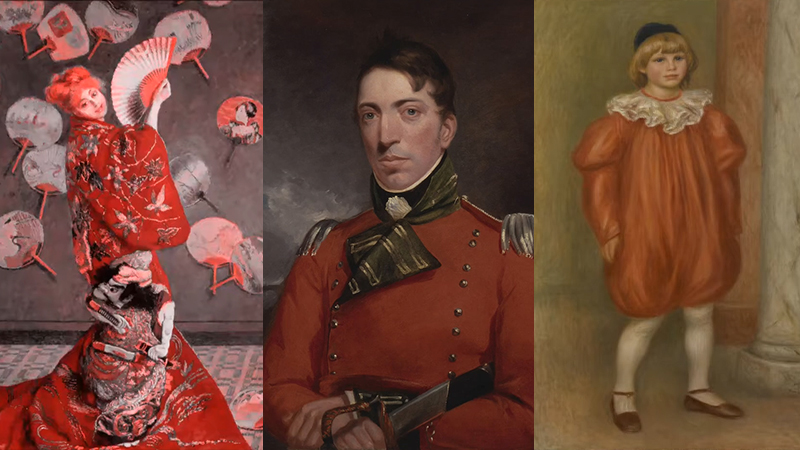
Red has always held a powerful place in the world of art, symbolizing passion, love, and even aggression. Throughout history, artists have used this hue to evoke strong emotions and provoke thought.
From the bold strokes of abstract expressionism to the rich textures of classical masterpieces, red paintings have captivated viewers and left a lasting impact.
In this exploration of the ten most famous red paintings, art enthusiasts will discover how various artists harnessed this color to convey their unique visions.
Each piece tells a story, reflecting the cultural and emotional landscapes of its time. Join the journey through these iconic works that continue to inspire and resonate with audiences around the globe.
1. Red Hill and Bones – Georgia O’Keeffe
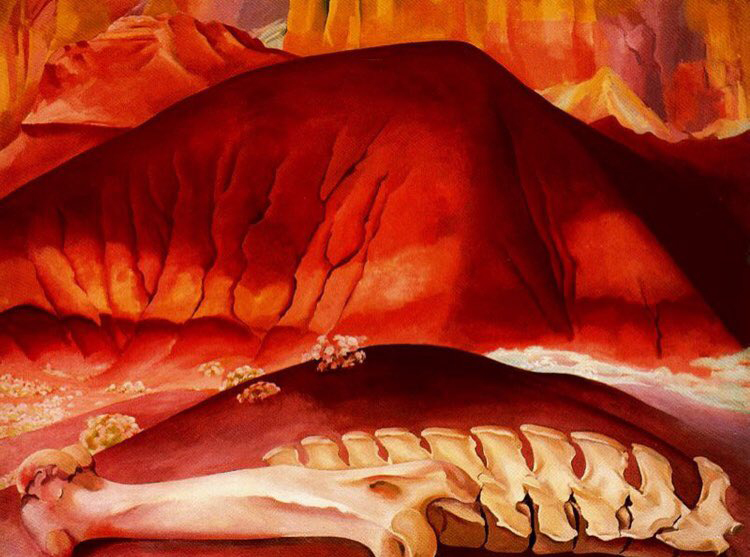
Red Hill and Bones showcases Georgia O’Keeffe’s mastery of color and form. Painted in 1930, this piece depicts the dramatic red hills of New Mexico juxtaposed with stark white bones.
O’Keeffe captures the arid landscape’s beauty, evoking themes of life and death. The red symbolizes both passion and the harshness of the environment.
This painting illustrates O’Keeffe’s ability to transform a simple scene into a profound statement about nature and the human experience. Its bold use of red makes it one of her most compelling works.
2. No. 301 – Mark Rothko
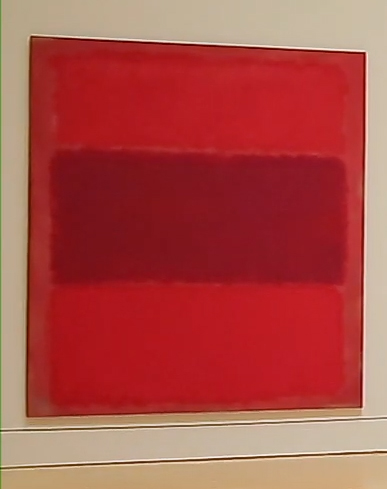
Mark Rothko created “No. 301” in 1959, showcasing deep red hues framed by contrasting lighter tones. Rothko’s work often explores emotional depth through color, and in this piece, the bold reds evoke feelings of intensity and contemplation.
The layered composition invites viewers to immerse themselves fully, allowing for a personal interpretation of its emotional resonance.
Rothko believed that colors could express profound human experiences, making “No. 301” a compelling example of abstract expressionism’s power to evoke strong emotions through simplicity.
3. Mit Und Gegen – Wassily Kandinsky
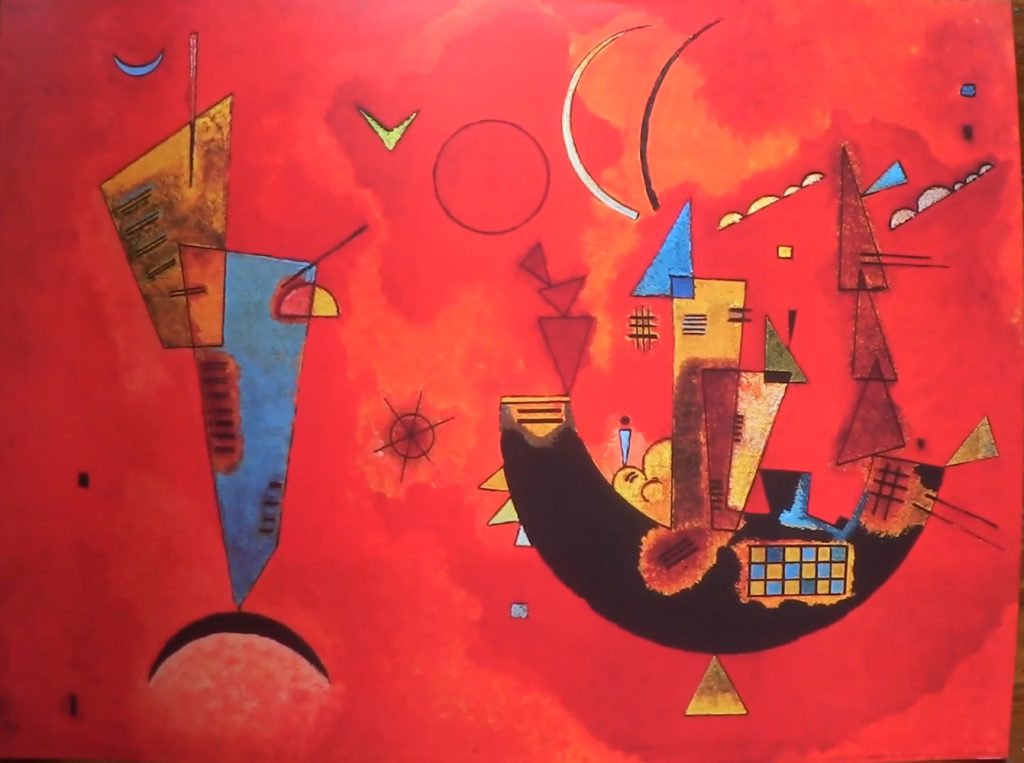
Kandinsky’s “Mit Und Gegen,” painted in 1925, exemplifies his pioneering approach to abstraction. This striking piece features reds alongside contrasting colors, creating a dynamic interplay that captivates viewers.
Kandinsky believed colors could convey emotions, and in this work, the bold reds symbolize passion and conflict. The layered shapes and intersecting lines draw the eye, inviting exploration and reflection.
Through “Mit Und Gegen,” Kandinsky challenges traditional forms, pushing the boundaries of color and form to evoke a deep emotional response.
4. Red Lenin – Andy Warhol
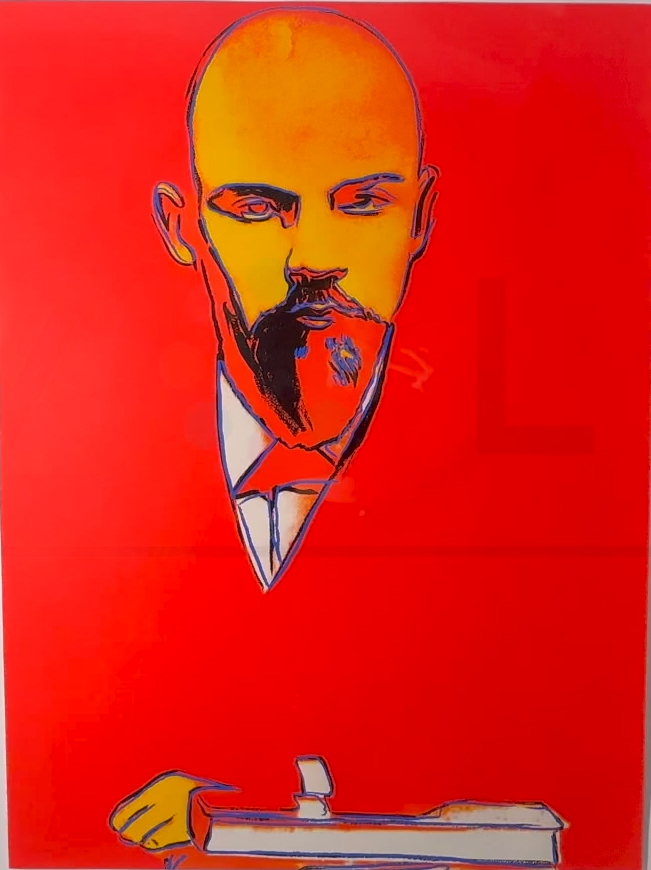
Warhol’s “Red Lenin,” created in 1987, exemplifies his fascination with bold colors and cultural icons. The artwork features a striking red backdrop that highlights a silkscreened image of Vladimir Lenin, showcasing Warhol’s commentary on political figures.
Its red speaks to passion and revolutionary spirit, while the repeated imagery reflects consumer culture’s impact on art.
By merging politics and pop art, Warhol invites viewers to question the nature of fame and the commodification of history. The piece remains a powerful reflection of Warhol’s unique style and critique of modern society.
5. Claude Renoir en Clown – Pierre-Auguste Renoir
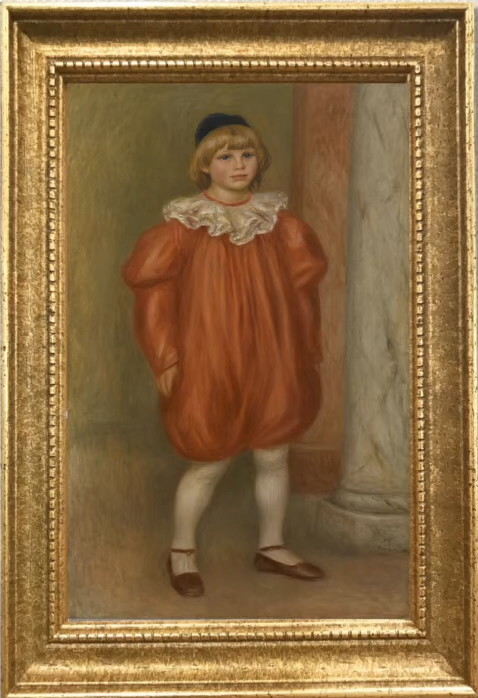
“Claude Renoir en Clown,” painted in 1879, captures the essence of childhood joy and innocence through bold strokes of red. This piece depicts the artist’s son, Claude, dressed as a clown, surrounded by lively hues that evoke exuberance.
Renoir’s use of red not only conveys warmth and affection but also denotes the playful spirit of youth. The lively brushwork adds texture and movement, inviting viewers to engage with the scene’s playful ambiance.
This painting exemplifies Renoir’s masterful ability to intertwine color with emotion, creating an unforgettable portrayal of familial love.
6. Portrait of Tommaso Inghirami – Raphael
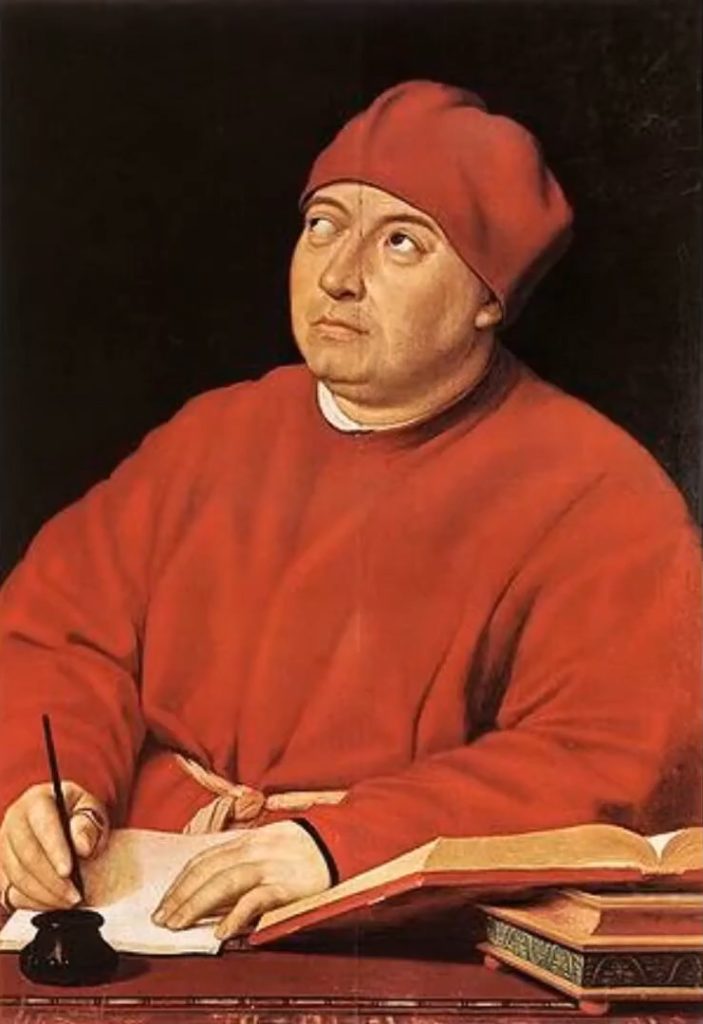
Raphael’s “Portrait of Tommaso Inghirami,” painted in 1514, features rich red tones that signify nobility and power. The reds in Inghirami’s robes contrast sharply with the deep background, drawing attention to his dignified expression.
This work exemplifies Raphael’s skill in capturing personality and emotion through color. Inghirami, a prominent figure in the Catholic Church, is depicted with an air of elegance that reflects his status.
The painting not only highlights Raphael’s mastery of portraiture but also his ability to convey the subject’s character through striking color contrasts.
7. Dr Pozzi at Home – John Singer Sargent
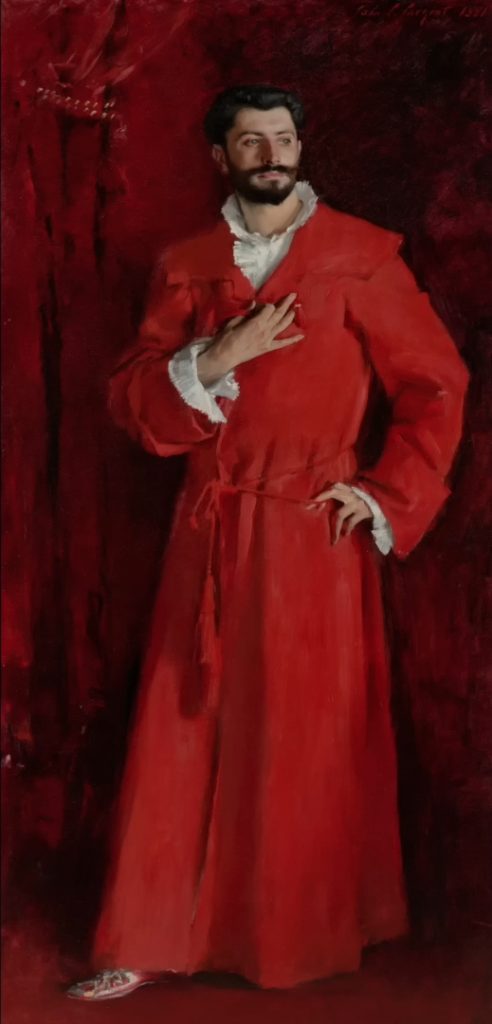
John Singer Sargent’s “Dr Pozzi at Home,” painted in 1881, showcases the striking use of red in its composition. Sargent captures the essence of Dr. Pozzi, a renowned physician, amidst a rich crimson backdrop.
The bold reds enhance the subject’s character, emphasizing his affluence and sophistication. The dynamic brushwork and layering create depth, drawing viewers into the intimacy of the scene.
Sargent’s masterful portrayal of light and fabric highlights the opulence, making this painting an exquisite example of portraiture that symbolizes the artist’s exceptional skill in color and detail.
8. Madame Monet in a Japanese Kimono – Claude Monet
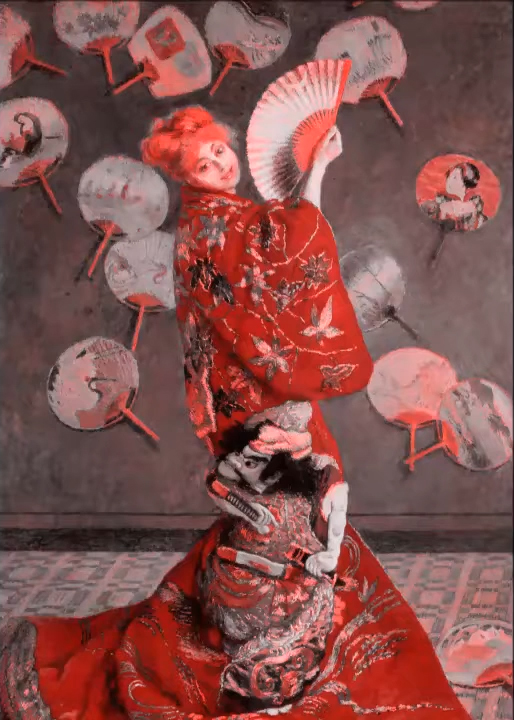
Monet’s “Madame Monet in a Japanese Kimono,” painted in 1876, showcases his wife, Camille, adorned in a kimono that reflects East Asian aesthetics.
The bold reds in the garment contrast beautifully with the soft, impressionistic background, creating a harmonious visual impact. Impressionism shines through Monet’s dynamic brushwork, capturing the delicate nuances of light and fabric.
This painting embodies his fascination with color and cultural influences, inviting viewers to appreciate the intersection of Eastern and Western artistic traditions.
9. Portrait of John Joseph Merlin – Thomas Gainsborough
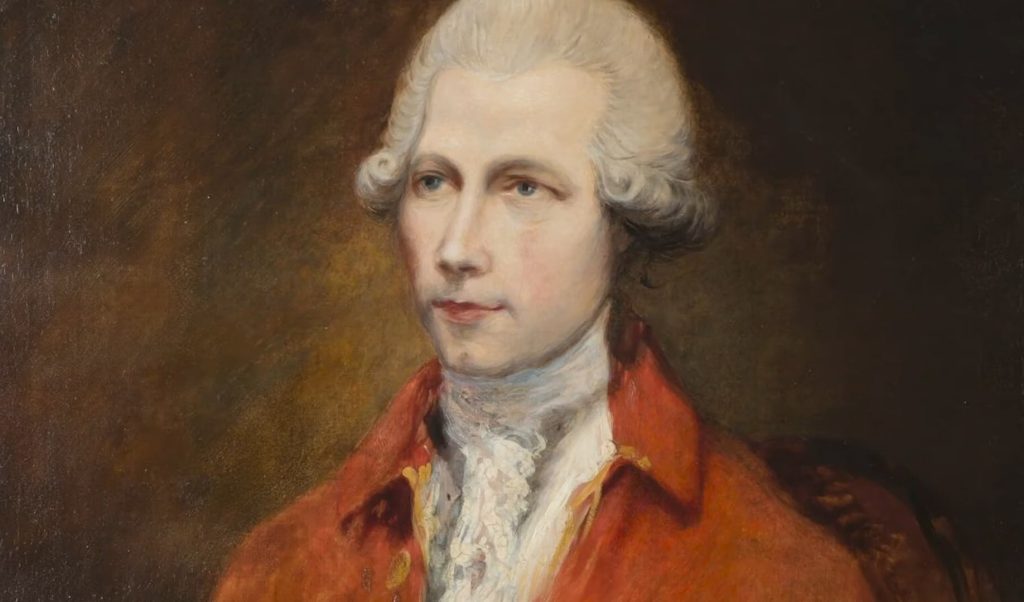
Thomas Gainsborough’s “Portrait of John Joseph Merlin” stands out for its reds and intricate detail. Gainsborough portrays the renowned inventor and musician John Joseph Merlin in opulent attire, emphasizing his social status.
The rich crimson backdrop accentuates the subject’s expression and the luxurious fabric of his clothing. This artwork captures the elegance of 18th-century portraiture, showcasing Gainsborough’s exceptional talent in blending personality with color.
The bold use of red not only enhances the visual appeal but also conveys the era’s fascination with wealth and innovation.
10. Captain Richard Gubbins – John Constable

“Captain Richard Gubbins,” painted by John Constable in 1805, showcases powerful reds that symbolize the subject’s strength and authority.
The rich crimson uniform contrasts with the landscape background, drawing focus to Gubbins’ determined expression. Constable’s masterful brushwork adds depth and texture, enhancing the painting’s emotional intensity.
This work highlights Constable’s ability to blend portraiture with elements of nature, inviting viewers to reflect on the character’s role in the English countryside.
This striking imagery exemplifies the artist’s dedication to capturing both individual and environment through color.






